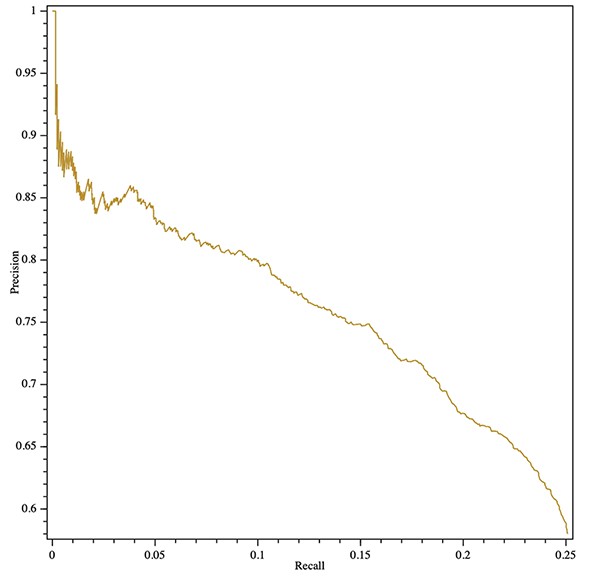FastText.NetWrapper
This is a cross-platform .NET Standard wrapper for Facebook's FastText library. The wrapper comes with bundled precompiled native binaries for all three platforms: Windows, Linux and MacOs.
Just add it to your project and start using it! No additional setup required. This library will unpack and call appropriate native binary depending on target platform.
What's new
1.2.3
- Added supervised model quantization with
Quantizemethod. - Stable version released! 🎉
1.2.2-preview
- Merged #20 with new
GetWordVectormethod.
1.2.1-preview
- Added model autotuning with quantization support.
- Fixed a horrible bug with
boolmarshalling.
1.2.0-preview
Version 1.2.0 introduces a few breaking changes to library API. If you are not ready to migrate, use v. 1.1.2.
- ❗️Breaking change:️ Removed both deprecated
Train()methods. - ❗️Breaking change:️ Removed deprecated
SupervisedArgsclass. - ❗️Breaking change:️ Removed
FastTextArgs.SupervisedDefaults()in favor of newSupervisedArgswith default constructor. - ❗️Breaking change:️
FastTextArgsclass can't be constructed directly, use newSupervisedArgsandUnsupervisedArgsclasses. - Added an
Unsupervised()method to train Skipgram or Cbow models.
1.1.2
- Fixed a horrible bug with
boolmarshalling on a1.1.*branch.
1.1.0, 1.1.1
- Added new
Supervised()method as part of streamlining the API. - Added new
Test()method for testing supervised model. - Deprecated both
Train()methods. They will be removed in v.1.2.0.
1.0.38
- Fixed a horrible bug with
boolmarshalling on a1.0.*branch.
Version 1.2.0 migration guide
- Instead of old
Train()methods useSupervised()andUnsupervised()methods. - Instead of
FastTextArgs.SupervisedDefaults()useSupervisedArgsorSupervised()overload with 2 arguments.
Usage
Library API closely follows fastText command-line interface, so you can jump right in.
Supervised model training
The simplest use case is to train a supervised model with default parameters. We create a FastTextWrapper and call Supervised().
var fastText = new FastTextWrapper();
fastText.Supervised("cooking.train.txt", "cooking");Note the arguments:
- We specify an input file with one labeled example per line. Here we use Stack Overflow cooking dataset from Facebook:
https://dl.fbaipublicfiles.com/fasttext/data/cooking.stackexchange.tar.gz. You can find extracted files split into training
and validation sets in
UnitTestsdirectory in this repository. - Your model will be saved to
cooking.binandcooking.vecwith pretrained vectors will be placed if the same directory. - Here we use
Supervised()overload with 2 arguments. This means that training will be done with default parameters. It's a good starting point and is the same as calling fastText this way:
./fasttext supervised -input cooking.train.txt -output cookingLoading models
Call LoadModel() and specify path to the .bin model file:
var fastText = new FastTextWrapper();
fastText.LoadModel("model.bin");Using pretrained vectors
To use pretrained vectors for your supervised model, create an instance of SupervisedArgs and customize it:
var fastText = new FastTextWrapper();
var args = new SupervisedArgs
{
PretrainedVectors = "cooking.unsup.300.vec",
dim = 300
};
fastText.Supervised("cooking.train.txt", "cooking", args);Here we get default training arguments, supply a path to pretrained vectors file and adjust vector dimension accordingly.
Important! Be sure to always check the dimension of your pretrained vectors! Many vectors on the internet have dimension 300,
but default dimension for fastText supervised model training is 100.
Testing the model
Now you can easily test a supervised model against a validation set. You can specify different values for k and threshlod as well.
var result = fastText.Test("cooking.valid.txt");You will get an instance of TestResult where you can find aggregated or per-label metrics:
Console.WriteLine($"Results:\n\tPrecision: {result.GlobalMetrics.GetPrecision()}" +
$"\n\tRecall: {result.GlobalMetrics.GetRecall()}" +
$"\n\tF1: {result.GlobalMetrics.GetF1()}");You can even get a precision-recall curve (aggregated or per-label)! Here is an example of exporting an SVG plot with cross-platform OxyPlot library:
var result = fastText.Test("cooking.valid.txt");
var curve = result.GetPrecisionRecallCurve();
var series = new LineSeries {StrokeThickness = 1};
series.Points.AddRange(curve.Select(x => new DataPoint(x.recall, x.precision)).OrderBy(x => x.X));
var plotModel = new PlotModel
{
Series = { series },
Axes =
{
new LinearAxis {Position = AxisPosition.Bottom, Title = "Recall"},
new LinearAxis {Position = AxisPosition.Left, Title = "Precision"}
}
};
using (var stream = new FileStream("precision-recall.svg", FileMode.Create, FileAccess.Write))
{
SvgExporter.Export(plotModel, stream, 600, 600, false);
}Supervised model quantization
You can train a new supervised model and quantize it immediatly by replacing SupervisedArgs with QuantizedSupervisedArgs:
var fastText = new FastTextWrapper();
fastText.Supervised("cooking.train.txt", "cooking", new QuantizedSupervisedArgs());You can also load an existing model and quantize it:
var fastText = new FastTextWrapper();
fastText.LoadModel("model.bin");
fastText.Quantize();Training unsupervised models
Use Unsupervised() method specifying model type: Skipgram or Cbow:
var fastText = new FastTextWrapper();
fastText.Unsupervised(UnsupervisedModel.SkipGram, "cooking.train.nolabels.txt", "cooking");You can use an optional UnsupervisedArgs argument to customize training.
Automatic hyperparameter tuning
You can use fastText autotune to do an automatic hyperparameter search.
Refer to https://github.com/facebookresearch/fastText/blob/master/docs/autotune.md for complete parameter reference.
Use AutotuneArgs to control tuning:
var fastText = new FastTextWrapper();
var autotuneArgs = new AutotuneArgs
{
Duration = 30, // in seconds
Metric = "precisionAtRecall:30", // supports custom metrics
Predictions = 2, // Supports @k predictions
ModelSize = "10M", // Set this to train a quantized model and do an
// additional quantization hyperparameter search. Requires QuantizedSupervisedArgs.
ValidationFile = "cooking.valid.txt" // REQUIRED: path to a validation file
};
fastText.Supervised("cooking.train.txt", "cooking", new QuantizedSupervisedArgs(), autotuneArgs);Getting logs from the wrapper
FastTextWrapper can produce a small amount of logs mostly concerning native library management. You can turn logging on by providing an
instance of Microsoft.Extensions.Logging.ILoggerFactory. In this example we use Serilog with console sink.
You can also inject your standard IloggerFactory through .NET Core DI.
// Add the following Nuget packages to your project:
// * Serilog.Sinks.Console
// * Serilog.Extensions.Logging
Log.Logger = new LoggerConfiguration()
.MinimumLevel.Debug()
.WriteTo.Console(theme: ConsoleTheme.None)
.CreateLogger();
var fastText = new FastTextWrapper(loggerFactory: new LoggerFactory(new[] {new SerilogLoggerProvider()}));Handling native exceptions
In version 1.1 I've added much better native error handling. Now in case of most native errors you will get a nice
NativeLibraryException which you can inspect for detailed error description.
Windows Requirements
Since this wrapper uses native C++ binaries under the hood, you will need to have Visual C++ Runtime Version 140 installed when running under Windows. Visit the MS Downloads page (https://support.microsoft.com/en-us/help/2977003/the-latest-supported-visual-c-downloads) and select the appropriate redistributable.
FastText C-style API
If you are interested in using FastText with C-style API, here is my fork of the official library: https://github.com/olegtarasov/fastText.



